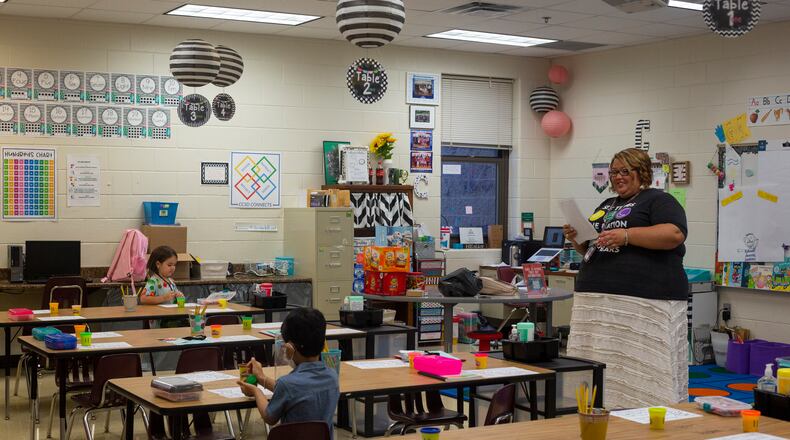Enrollment in Georgia’s public schools recovered this fall after a steep drop last year, with gains centered mostly among younger incoming students amid small declines in other grades.
Statewide enrollment fell marginally in most grades, with the sharpest drop, 3%, in sixth grade, according to data recently posted by the state department of education. The declines were offset by growth in pre-kindergarten and kindergarten. Each of those class levels swelled by about 7% after falling precipitously last year amid the havoc of COVID-19.
Georgia also saw a bumper crop of high school freshmen this year: That grade level spiked by 8% after falling a little last year.
Those statewide changes were mostly mirrored in metro Atlanta.
Cobb County saw 10% gains among freshmen and kindergartners, with drops in most other grades. DeKalb County had 12% more freshmen and nearly 16% more kindergartners. Fulton County had 3% more freshmen and a 10% larger kindergarten class.
Gwinnett County, the state’s largest school district with roughly a tenth of the state’s enrollment, deviated from the norm, with growth in most grade levels.
The 0.6% enrollment growth statewide follows a 2.2% drop last year, as the pandemic continued to disrupt in-person learning and kindergarten enrollment plummeted nearly 10%.
Former Fulton Superintendent Ken Zeff said the growth in enrollment among the youngest students is likely explained by the return of parents who eschewed online learning last year or who kept their kids home for fear of infection.
“The most consistent narrative I see here (and from conversations with a few district leaders) is the increase in K, PK enrollment,” Zeff wrote in response to an emailed query by The Atlanta Journal-Constitution. “A lot of parents held their kids out and are now returning. This seems to be especially acute in Clayton and APS,” continued Zeff, who leads the group Learn4Life Metro Atlanta, a partnership of metro school systems, businesses and nonprofits working to improve student achievement.
Credit: Alyssa Pointer
Credit: Alyssa Pointer
COVID-19 merely exacerbated a trend years in the making though: Enrollment has been growing for a long time in Georgia but started decelerating over the past decade.
People had fewer babies after the Great Recession. Births in Georgia plummeted in the six years after the peak in 2007, dropping 13% to around 130,000 by 2013.
Annual growth in enrollment fell to less than 1% in 2015 and has remained that low ever since.
Enrollment is checked each October and March, with 1,740,812 students counted last month.
That is up just 3.3% from October 2011. By comparison, enrollment grew 14.5% the decade before that.
The student counts are relevant for school finances: State funding is allocated to schools based on enrollment. Schools get most of the rest of their money from local property taxes, with a little help from the federal government.
About the Author
Keep Reading
The Latest
Featured





